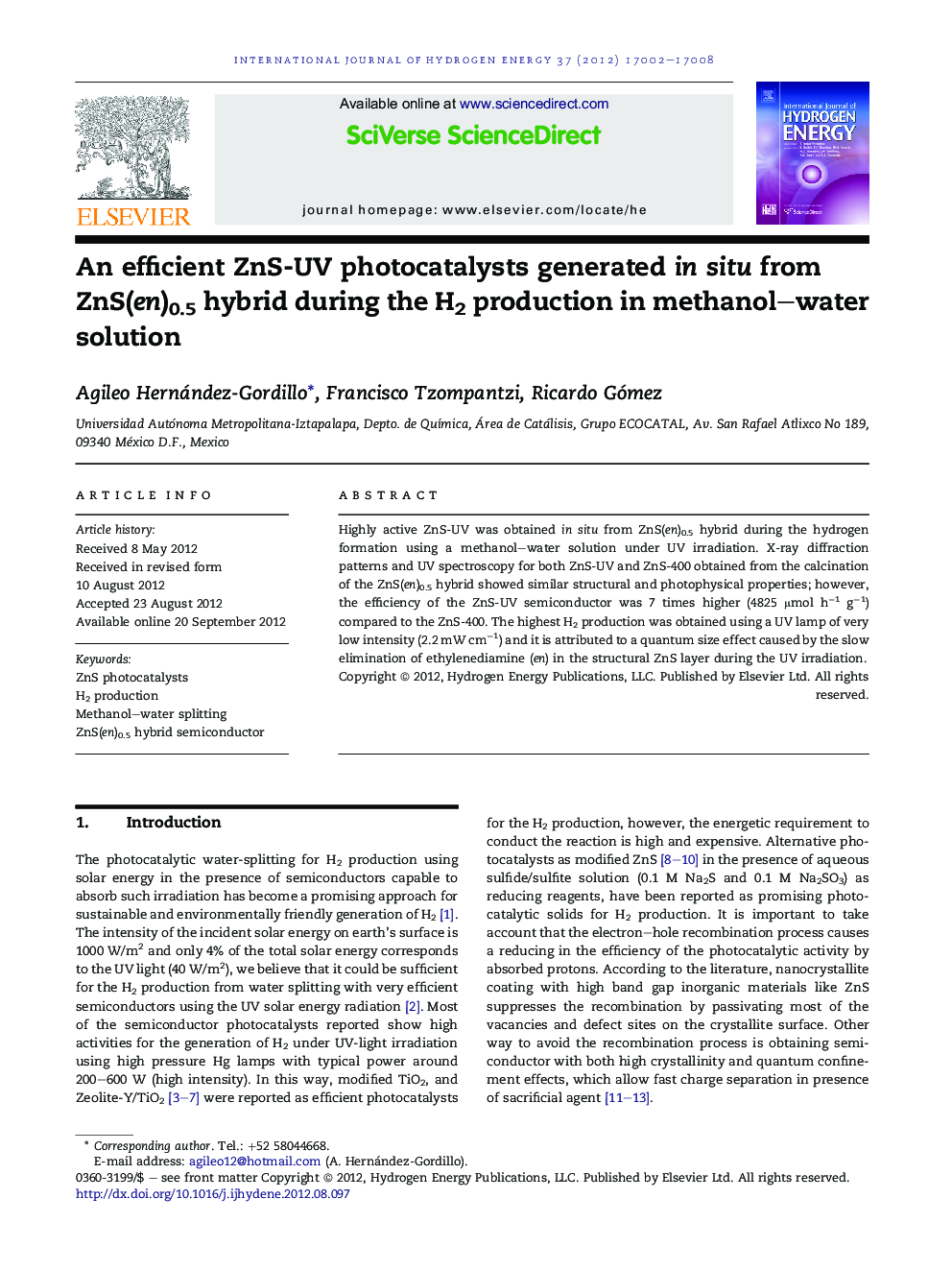| Article ID | Journal | Published Year | Pages | File Type |
|---|---|---|---|---|
| 1270882 | International Journal of Hydrogen Energy | 2012 | 7 Pages |
Highly active ZnS-UV was obtained in situ from ZnS(en)0.5 hybrid during the hydrogen formation using a methanol–water solution under UV irradiation. X-ray diffraction patterns and UV spectroscopy for both ZnS-UV and ZnS-400 obtained from the calcination of the ZnS(en)0.5 hybrid showed similar structural and photophysical properties; however, the efficiency of the ZnS-UV semiconductor was 7 times higher (4825 μmol h−1 g−1) compared to the ZnS-400. The highest H2 production was obtained using a UV lamp of very low intensity (2.2 mW cm−1) and it is attributed to a quantum size effect caused by the slow elimination of ethylenediamine (en) in the structural ZnS layer during the UV irradiation.
Graphical abstractThe efficient ZnS-UV semiconductor generated in situ during the H2 production using methanol–water under UV irradiation.Figure optionsDownload full-size imageDownload as PowerPoint slideHighlights► ZnS semiconductor can be generated in situ during the H2 production reaction. ► ZnS-UV and ZnS-400 showed similar structural and photophysical properties. ► The ZnS-UV is an efficient semiconductor using UV lamp of low intensity. ► The highest activity of the ZnS-UV is attributed to the quantum effect.
